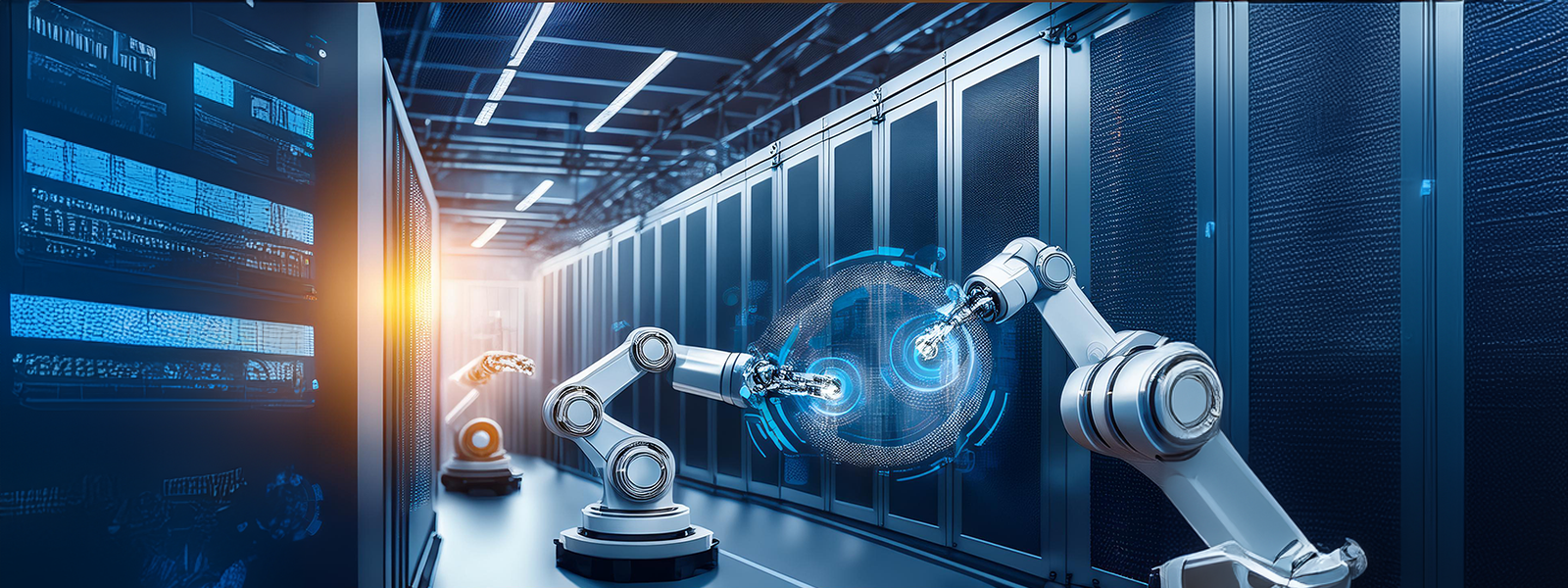AI integration revolutionizes IT service desks, enhancing efficiency, personalization, and proactive support. By leveraging technologies like natural language processing and machine learning, AI streamlines operations, automates processes, and delivers superior customer experiences.
Understanding clients' technical issues is crucial for providing effective support services. Businesses require timely and precise solutions, necessitating support teams to have extensive technical expertise and clear communication skills. Tools embedded in products or online, like virtual assistants, can enhance support interactions by facilitating informed and efficient client self-service. However, the ever-increasing complexity of IT infrastructures and the growing demands of modern businesses have made it challenging for traditional service desks to keep pace. This is where AI integration comes into play, transforming the way IT service desks operate and providing a next-gen solution to meet the evolving needs of today's organizations.
Role of AI in IT Service Management
IT service desks serve as the frontline for resolving technical issues, ensuring business continuity, and maintaining user satisfaction. Traditionally, these desks rely heavily on human agents to handle a myriad of tasks, from troubleshooting technical problems to managing service requests. However, the advent of AI integration technology is reshaping this, introducing advanced capabilities that augment human efforts and deliver superior service outcomes.
- Intelligent Ticket Prioritization and Routing: One of the key benefits of AI integration is its ability to intelligently prioritize and route incoming tickets. By analyzing the content of the ticket, the underlying context, and historical data, AI can accurately categorize and assign tickets to the most appropriate support personnel or teams. This ensures that critical issues are addressed promptly, while less urgent tickets are handled efficiently, optimizing resource allocation and minimizing response times.
- Automated Ticket Resolution: AI-powered virtual assistants and chatbots can handle routine and frequently asked questions, providing immediate resolutions to common issues. By leveraging natural language processing and machine learning algorithms, these AI-driven assistants can understand and respond to user inquiries in a conversational manner, reducing the workload on support staff and improving overall efficiency.
- Knowledge Management and Self-Service Capabilities: AI integration can significantly enhance knowledge management and self-service capabilities within IT service desks. By analyzing vast repositories of technical documentation, troubleshooting guides, and past resolutions, AI can create comprehensive knowledge bases that users can access for self-service support. This empowers end-users to resolve issues independently, reducing the burden on service desk staff and promoting a more efficient support model.
- Predictive Analytics and Proactive Support: AI's ability to analyze vast amounts of data and identify patterns can be leveraged to provide predictive analytics and proactive support. By monitoring system logs, performance metrics, and user behavior, AI can detect potential issues before they occur, enabling service desks to take preventive measures and minimize downtime. Additionally, AI can suggest proactive maintenance tasks and recommend best practices to optimize system performance.
- Personalized and Context-Aware Support: AI integration allows IT service desks to deliver personalized and context-aware support. By analyzing user profiles, historical interactions, and the specific context of each request, AI can tailor its responses and recommendations to meet the unique needs of each user or organization. This ensures a more satisfying and effective support experience, fostering improved customer satisfaction and loyalty.
- Continuous Learning and Improvement: One of the key advantages of AI integration is its ability to continuously learn and improve. By analyzing user feedback, support interactions, and resolution outcomes, AI algorithms can refine their knowledge and adapt their responses over time. This constant learning and improvement cycle ensures that IT service desks remain up-to-date and provide increasingly accurate and effective support.
AI Integration Solutions in Practice
- Virtual Assistants and Chatbots: Virtual assistants and chatbots are among the most visible AI integration solutions in IT service desks. These tools leverage NLP to understand and respond to user queries in real-time. They can perform a variety of tasks, from answering FAQs to guiding users through complex troubleshooting processes. For example, a virtual assistant can help a user configure email settings, reset passwords, or check system status. By providing instant support, these AI tools reduce the workload on human agents and improve overall response times.
- Automated Case Summarization and Reporting: AI-driven systems can automatically generate case summaries and reports, providing valuable insights into service desk performance and user behavior. These automated summaries offer a concise overview of each interaction, highlighting key details and outcomes. This not only aids in better decision-making but also streamlines the reporting process.
Furthermore, AI can analyze data to identify trends and patterns, offering recommendations for improving service desk operations. This data-driven approach enables continuous improvement and helps IT teams stay ahead of potential issues.
Best Practices in Implementing AI Integration
While AI integration offers numerous benefits, successful implementation requires careful planning and consideration. Here are some best practices and considerations to keep in mind:
- Stakeholder Alignment and Change Management: Introducing AI into IT service desks requires buy-in and alignment from stakeholders across the organization. Effective change management strategies should be employed to ensure a smooth transition and address any concerns or resistance from employees or end-users.
- Data Quality and Governance: AI systems rely heavily on the quality and accuracy of the data they are trained on. IT service desks should implement robust data governance policies and ensure that their data is clean, structured, and representative of real-world scenarios.
- Security and Privacy Considerations: As AI systems handle sensitive data and potentially confidential information, it is crucial to address security and privacy concerns. Implementing robust security measures, adhering to data protection regulations, and ensuring transparency in data usage is essential.
- Hybrid Approach: Human and AI collaboration where AI can automate many tasks and processes, it is essential to strike a balance between automation and human intervention. A hybrid approach that leverages the strengths of both AI and human support staff can provide the most effective and comprehensive support experience.
- Continuous Monitoring and Improvement: AI integration is not a one-time implementation; it requires continuous monitoring, evaluation, and improvement. IT service desks should establish processes to gather feedback, analyze performance metrics, and make necessary adjustments to ensure optimal performance and alignment with evolving business needs.
Challenges and Considerations
- Data Privacy and Security: While AI integration offers numerous benefits, it also raises concerns about data privacy and security. IT service desks handle sensitive information, and it is crucial to ensure that AI systems adhere to stringent security protocols. Organizations must implement robust encryption methods and access controls to safeguard user data. Additionally, compliance with regulations such as GDPR and HIPAA is essential to maintain user trust and avoid legal repercussions.
- Maintaining Human Touch: Despite the efficiency gains offered by AI, maintaining a human touch in IT service desks remains important. Users often prefer interacting with human agents for complex or sensitive issues. Therefore, AI should augment rather than replace human support. A hybrid approach, where AI handles routine tasks and human agents focus on high-level problem-solving, strikes the right balance between helpdesk automation and personalized service.
- Continuous Learning and Adaptation: AI systems require continuous learning and adaptation to remain effective. Regular updates and training are necessary to ensure that AI tools stay current with evolving technologies and user needs. Organizations must invest in ongoing AI development and monitor performance to fine-tune algorithms and enhance accuracy.
Future Trends in AI-Augmented IT Service Desks
- Predictive Analytics and Proactive Support: The future of AI in IT service desks lies in predictive analytics and proactive support. By leveraging machine learning and data analytics, AI can predict potential issues before they occur and provide preemptive solutions. This shift from reactive to proactive support will significantly reduce downtime and improve user satisfaction.
- Integration with IoT and Edge Computing: As the Internet of Things (IoT) and edge computing continue to grow, AI integration in IT service desks will expand to manage a more complex and distributed environment. AI can monitor and analyze data from various devices and sensors in real-time, ensuring seamless operation and quick resolution of issues across the entire IT infrastructure.
- Enhanced User Interfaces: Advancements in AI will lead to more intuitive and user-friendly interfaces. Voice-activated virtual assistants and augmented reality (AR) support tools are on the horizon, providing users with more interactive and immersive support experiences. These innovations will further streamline the troubleshooting process and enhance user engagement.
Conclusion
AI isn't here to replace human agents; it's here to augment them. By working together, AI and human expertise can create a powerful and efficient IT service desk environment that delivers exceptional user experiences. As AI technology continues to evolve, we can expect even more sophisticated solutions that not only support users but also offer predictive maintenance and proactive problem-solving capabilities. This collaborative approach between humans and AI will be the pillar of future-proof IT service desks, ensuring smooth operations and a satisfied user base.





